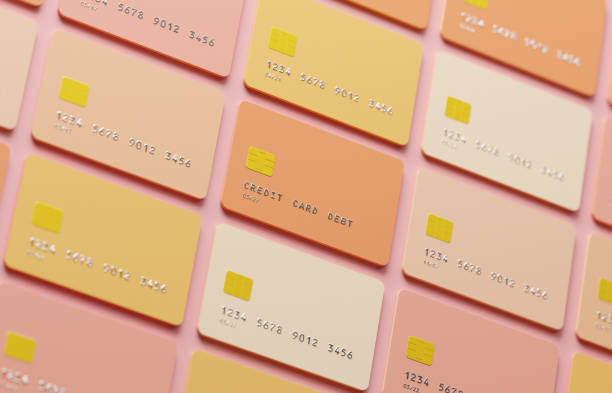
In the toolkit of personal finance, few instruments are as readily accessible and potentially hazardous as the personal loan. This form of unsecured debt provides a lump sum of cash that can be used for virtually any purpose, from consolidating high-interest credit cards to funding a home renovation or covering a medical emergency. Unlike a mortgage or auto loan, it is not tied to a specific asset, which means approval is based primarily on creditworthiness rather than collateral. While this flexibility can make it a powerful tool for managing financial challenges or opportunities, it also demands a high degree of discipline and foresight to ensure it serves as a stepping stone to stability rather than a anchor dragging one deeper into debt.The strategic use of a personal loan hinges on its interest rate structure. For a borrower with strong credit, a personal loan may offer a lower annual percentage rate than credit cards, making it an effective instrument for debt consolidation. By paying off multiple high-interest balances with a single, lower-interest loan, an individual can simplify their payments and reduce the total interest paid, accelerating their journey out of debt. Similarly, using a personal loan to finance a necessary expense, such as a major car repair, can be more cost-effective than putting it on a credit card, provided the loan terms are favorable.However, the ease of access to a significant sum of money presents considerable risk. Because the loan is unsecured, lenders mitigate their risk by charging higher interest rates for borrowers with less-than-perfect credit, potentially creating a costly debt burden. Furthermore, using a personal loan for discretionary spending, such as a vacation or luxury items, transforms a short-term desire into a long-term financial obligation with interest, undermining future financial flexibility. The fixed monthly payment becomes a new, inflexible line item in the budget, which can strain cash flow if income becomes unstable or unexpected expenses arise.Ultimately, the role of a personal loan in personal finance is that of a tactical solution, not a strategic plan. Its prudent application is confined to scenarios where it clearly improves one's financial position, such as reducing overall interest costs or funding an investment that provides a tangible return. Before proceeding, an individual must honestly assess their ability to manage the new payment within their budget and resist the temptation to use newly freed-up credit lines. When used with intentionality and restraint, a personal loan can be a useful lever for financial progress. Without these safeguards, it can easily become a catalyst for a deeper and more complex debt cycle, demonstrating that the value of any financial tool is determined solely by the wisdom with which it is wielded.



 In the toolkit of personal finance, few instruments are as readily accessible and potentially hazardous as the personal loan. This form of unsecured debt provides a lump sum of cash that can be used for virtually any purpose, from consolidating high-interest credit cards to funding a home renovation or covering a medical emergency. Unlike a mortgage or auto loan, it is not tied to a specific asset, which means approval is based primarily on creditworthiness rather than collateral. While this flexibility can make it a powerful tool for managing financial challenges or opportunities, it also demands a high degree of discipline and foresight to ensure it serves as a stepping stone to stability rather than a anchor dragging one deeper into debt.The strategic use of a personal loan hinges on its interest rate structure. For a borrower with strong credit, a personal loan may offer a lower annual percentage rate than credit cards, making it an effective instrument for debt consolidation. By paying off multiple high-interest balances with a single, lower-interest loan, an individual can simplify their payments and reduce the total interest paid, accelerating their journey out of debt. Similarly, using a personal loan to finance a necessary expense, such as a major car repair, can be more cost-effective than putting it on a credit card, provided the loan terms are favorable.However, the ease of access to a significant sum of money presents considerable risk. Because the loan is unsecured, lenders mitigate their risk by charging higher interest rates for borrowers with less-than-perfect credit, potentially creating a costly debt burden. Furthermore, using a personal loan for discretionary spending, such as a vacation or luxury items, transforms a short-term desire into a long-term financial obligation with interest, undermining future financial flexibility. The fixed monthly payment becomes a new, inflexible line item in the budget, which can strain cash flow if income becomes unstable or unexpected expenses arise.Ultimately, the role of a personal loan in personal finance is that of a tactical solution, not a strategic plan. Its prudent application is confined to scenarios where it clearly improves one's financial position, such as reducing overall interest costs or funding an investment that provides a tangible return. Before proceeding, an individual must honestly assess their ability to manage the new payment within their budget and resist the temptation to use newly freed-up credit lines. When used with intentionality and restraint, a personal loan can be a useful lever for financial progress. Without these safeguards, it can easily become a catalyst for a deeper and more complex debt cycle, demonstrating that the value of any financial tool is determined solely by the wisdom with which it is wielded.
In the toolkit of personal finance, few instruments are as readily accessible and potentially hazardous as the personal loan. This form of unsecured debt provides a lump sum of cash that can be used for virtually any purpose, from consolidating high-interest credit cards to funding a home renovation or covering a medical emergency. Unlike a mortgage or auto loan, it is not tied to a specific asset, which means approval is based primarily on creditworthiness rather than collateral. While this flexibility can make it a powerful tool for managing financial challenges or opportunities, it also demands a high degree of discipline and foresight to ensure it serves as a stepping stone to stability rather than a anchor dragging one deeper into debt.The strategic use of a personal loan hinges on its interest rate structure. For a borrower with strong credit, a personal loan may offer a lower annual percentage rate than credit cards, making it an effective instrument for debt consolidation. By paying off multiple high-interest balances with a single, lower-interest loan, an individual can simplify their payments and reduce the total interest paid, accelerating their journey out of debt. Similarly, using a personal loan to finance a necessary expense, such as a major car repair, can be more cost-effective than putting it on a credit card, provided the loan terms are favorable.However, the ease of access to a significant sum of money presents considerable risk. Because the loan is unsecured, lenders mitigate their risk by charging higher interest rates for borrowers with less-than-perfect credit, potentially creating a costly debt burden. Furthermore, using a personal loan for discretionary spending, such as a vacation or luxury items, transforms a short-term desire into a long-term financial obligation with interest, undermining future financial flexibility. The fixed monthly payment becomes a new, inflexible line item in the budget, which can strain cash flow if income becomes unstable or unexpected expenses arise.Ultimately, the role of a personal loan in personal finance is that of a tactical solution, not a strategic plan. Its prudent application is confined to scenarios where it clearly improves one's financial position, such as reducing overall interest costs or funding an investment that provides a tangible return. Before proceeding, an individual must honestly assess their ability to manage the new payment within their budget and resist the temptation to use newly freed-up credit lines. When used with intentionality and restraint, a personal loan can be a useful lever for financial progress. Without these safeguards, it can easily become a catalyst for a deeper and more complex debt cycle, demonstrating that the value of any financial tool is determined solely by the wisdom with which it is wielded.


